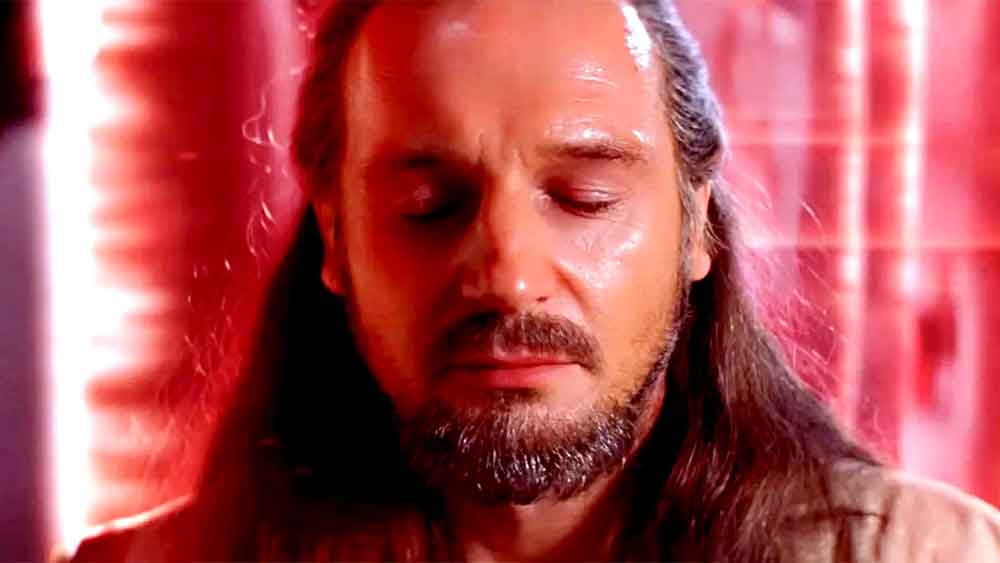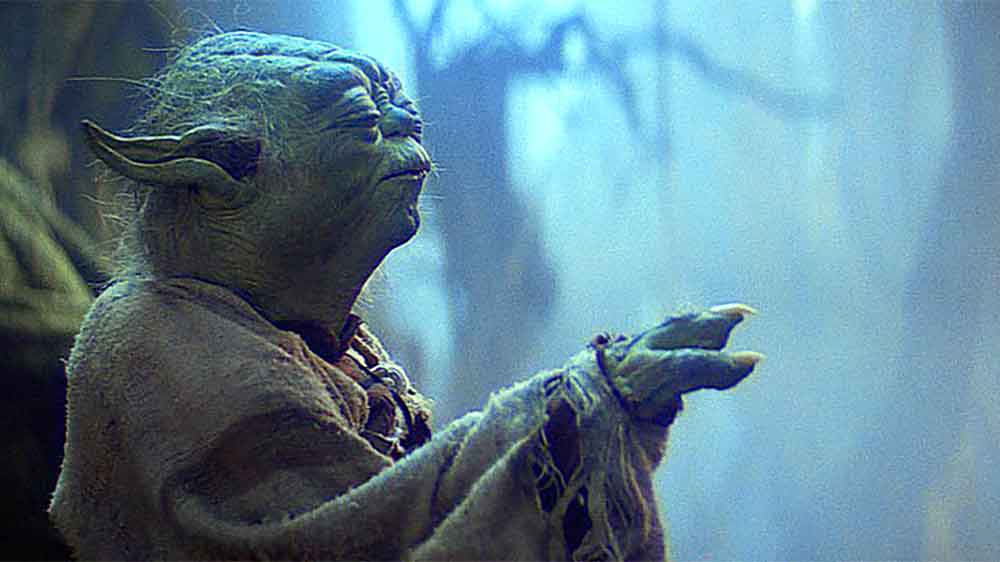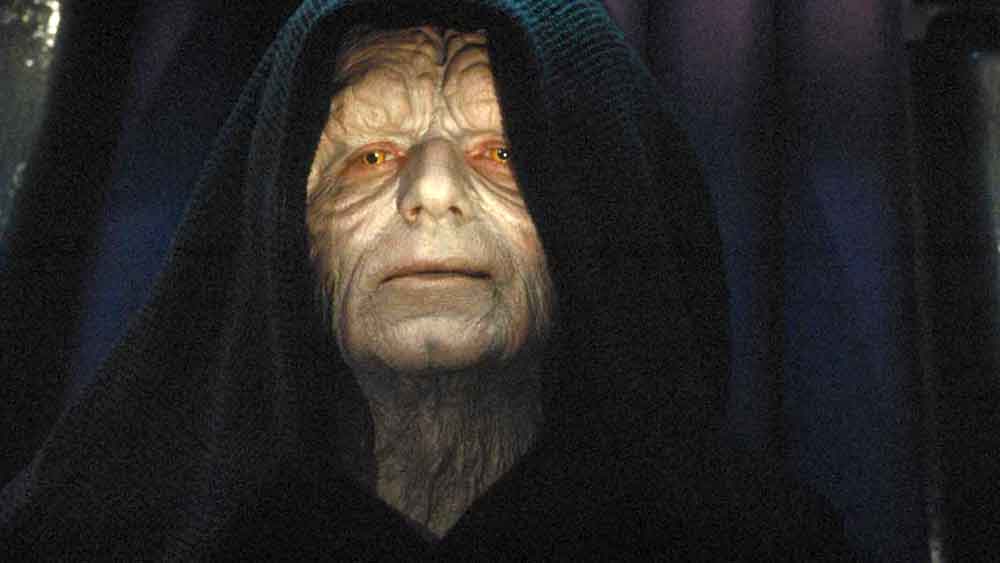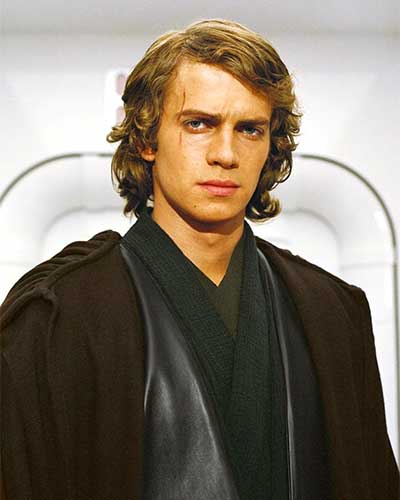The Force emerges not merely as a mystical energy but as a profound philosophy that weaves through the very fabric of existence.
It is a cosmic tapestry of balance and harmony, a concept that transcends the boundaries of fiction to touch the core of human understanding.
In exploring the Philosophy of the Force, we embark on a journey through the rich narrative of Star Wars, delving into the intricate interplay of light and dark, good and evil, and the eternal quest for equilibrium in a galaxy far, far away.
Through the lens of the Force, we explore the timeless themes of self-discovery, resilience, and the delicate dance between opposing forces that mirrors the intricate dance of life itself.
Buckle up as we venture into the heart of the Star Wars saga, peeling back the layers of its cosmic philosophy to reveal the wisdom, morality, and universal truths that resonate with audiences across generations.
The Philosophy of the Force beckons us to ponder our own roles in the grand narrative of existence, inviting us to reflect on the choices that shape our destinies and contribute to the greater harmony of our shared galactic journey.
Balance in the Force

The concept of balance within the Force is a cornerstone of the Star Wars universe, reflecting a profound understanding of the cosmic energies that govern the galaxy.
This intricate interplay between the light and dark sides of the Force serves as a metaphor for the eternal struggle between good and evil, creation and destruction.
The Force, as a cosmic entity, is depicted as a living, breathing force that craves equilibrium. This philosophy of the Force aspect makes the metaphysical a living thing.
It seeks a delicate harmony where both the light and dark sides coexist, each playing a vital role in maintaining the cosmic balance.
This equilibrium is not static but dynamic, a constant ebb and flow that reflects the ever-changing nature of the universe.
The Jedi, devoted followers of the light side, are entrusted with the responsibility of preserving this balance.
They believe in using the Force selflessly, as a means to serve the greater good.
By aligning themselves with the light side, the Jedi contribute to the overall harmony of the galaxy, ensuring that the Force remains in balance.
Anakin Skywalker’s transformation into Darth Vader serves as a tragic example of the catastrophic consequences that arise when this delicate equilibrium is disrupted.
Initially a promising Jedi with the potential to bring balance to the Force, Anakin’s descent into the dark side throws the Force into turmoil.
His actions, fueled by fear, anger, and a desire for power, upset the cosmic balance, unleashing a ripple effect of suffering and chaos.
The fall of Anakin Skywalker is a cautionary tale, illustrating the seductive nature of the dark side and the dire consequences of succumbing to its temptations.
His choices have a profound impact on the galaxy, highlighting the interconnectedness of all living things through the Force.
Yoda, the venerable Jedi Master, imparts invaluable wisdom in The Empire Strikes Back, emphasizing the importance of balance.
His words resonate with the timeless truth that emotions such as anger, fear, and aggression are the hallmarks of the dark side.
Yoda’s warning serves as a reminder that the path to darkness is easily tread, and once embarked upon, it can dominate an individual’s destiny, leading to a spiral of destruction.
The philosophy of balance within the Force not only shapes the narrative of Star Wars but also resonates with real-world philosophical and spiritual teachings.
It prompts reflection on the delicate equilibrium needed in our own lives, urging us to navigate the complexities of our emotions and choices with mindfulness and a commitment to the greater good.
Through the lens of the Force, Star Wars invites audiences to ponder the universal quest for balance in the face of adversity and the eternal dance between light and darkness in the cosmic tapestry of existence.
Harmony and Unity

The teachings of the Force extend beyond the concept of balance to emphasize the profound importance of unity and harmony, both within individuals and in their relationship with the broader cosmic tapestry.
This holistic understanding of the Force is central to the Jedi philosophy, shaping their approach to the mystical energy that binds the galaxy together.
At the core of this philosophy is the idea that individuals must cultivate a deep sense of unity and harmony within themselves.
The Force serves as a guiding light, encouraging Jedi to listen to its whispers, to attune themselves to its rhythms. Qui-Gon Jinn encapsulates this sentiment in his teachings, reminding his disciples that intelligence goes beyond mere verbal expression.
Instead, true wisdom lies in the ability to connect with the Force on a spiritual level, transcending the limitations of language and intellect.
Qui-Gon Jinn’s admonition challenges the conventional notions of knowledge, advocating for a more intuitive and spiritually attuned understanding of the world.
It underscores the idea that true intelligence involves not just the accumulation of facts but a deeper, intuitive connection with the Force, a connection that extends beyond the boundaries of conventional understanding.
This emphasis on spiritual connection extends to the broader environment and the galaxy itself.
On a metaphysical level of the philosophy of the Force, the Force is depicted as a living entity, an omnipresent energy that permeates all aspects of existence.
It is not a passive force but an active participant in the unfolding events of the galaxy.
The actions of individuals and societies can either harmonize with the natural flow of the Force or disrupt its delicate balance.
By embracing the light side of the Force, individuals contribute to the overall harmony of the galaxy.
The Jedi are portrayed as guardians of this harmony, working to ensure that the Force flows freely and positively influences the galaxy.
This harmonious relationship is not just an abstract concept but a tangible force that can be harnessed for the greater good.
The interconnectedness of all living things through the Force reinforces the philosophy of the Force idea that individual choices have far-reaching implications, emphasizing the need for a collective commitment to the light side.
The Force teaches that true wisdom and understanding come from cultivating unity and harmony within oneself, as well as fostering a harmonious relationship with the surrounding world.
This spiritual connection not only guides individuals on their personal journeys in discovering the philosophy of the Force, but it also plays a crucial role in shaping the destiny of the galaxy.
The Dark Side and Temptation

The dark side of the Force, a potent and seductive force, stands as a constant temptation in the Star Wars universe. This is the evil in the philosophy of the Force, but it’s also more complicated than that.
It is a corruptive energy that preys on the deepest fears, desires, and vulnerabilities of individuals, offering power and control at a grave cost.
The Sith, practitioners of the dark side, are portrayed as beings consumed by their insatiable thirst for dominance and control, succumbing to the alluring whispers of the dark side’s power.
Anakin’s journey from a hopeful Jedi to the formidable Sith Lord Darth Vader serves as a poignant illustration of the allure of the dark side.
Driven by fear of loss and a desperate desire to save his loved ones from suffering,
Anakin becomes susceptible to the promises of power and a shortcut to achieving his goals. The dark side wraps itself around him, clouding his judgment and leading him down a path of destruction. It’s a cautionary tale in the philosophy of the Force.
The tragedy of Anakin Skywalker’s fall is a testament to the nuanced nature of the Force’s duality.
It highlights the fine line between the light and dark sides and emphasizes the challenges individuals face in resisting the seductive pull of the dark side’s temptations.
Anakin’s descent into darkness not only alters the course of his own life but sends shockwaves through the galaxy, disrupting the delicate balance of the Force.
The Return of the Jedi further explores the insidious nature of the dark side through the character of the Emperor.
As a master of the dark side, the Emperor attempts to corrupt Luke Skywalker, the last hope of the Jedi, by appealing to his anger and hatred.
The Emperor recognizes that these emotions are powerful gateways to the dark side, offering Luke the chance to embrace his inner turmoil for immediate and overwhelming power.
Luke’s internal struggle becomes a profound exploration of the choices individuals face in maintaining their connection to the Force.
The Emperor’s manipulations force Luke to confront his own inner demons, tempting him with the promise of power that could be used to destroy his enemies.
However, Luke resists this allure, understanding the destructive consequences that such a choice would unleash upon himself and the galaxy.
This internal conflict between the light and dark sides of the Force is a central theme in Star Wars, symbolizing the broader struggle between good and evil in the human experience.
It underscores the importance of self-discipline, resilience, and the ability to resist the seductive temptations that may lead one down a destructive path. This is a key element of the philosophy of the Force.
The portrayal of the dark side in Star Wars serves as a cautionary tale, a narrative device that urges audiences to reflect on the choices they make in their own lives.
The allure of power, anger, and hatred is a universal temptation in the philosophy of the Force, and the saga of Star Wars invites viewers to consider the consequences of succumbing to these darker impulses.
Philosophy of The Force: Character Examples
Anakin Skywalker / Darth Vader

Anakin Skywalker’s transformation from a promising Jedi to the formidable Sith Lord Darth Vader is a tragic narrative that resonates throughout the Star Wars saga.
Anakin’s journey serves as a powerful exploration of the perils of succumbing to the seductive allure of the dark side of the Force, unraveling not only his own destiny but sending shockwaves that reverberate across the entire galaxy.
Anakin’s early life is marked by exceptional talent and an innate connection to the Force.
Identified as the Chosen One, a prophesized figure destined to bring balance to the Force, Anakin’s potential is immense within the philosophy of the Force.
However, it is precisely this potential that becomes a double-edged sword.
His desire to harness the power of the Force and the fear of losing his loved ones propel him into a tumultuous emotional journey.
The turning point in Anakin’s life occurs when he experiences a series of personal losses and struggles.
His attachment to Padmé Amidala and the fear of losing her, coupled with the Jedi Council’s perceived lack of trust and understanding, creates fertile ground for the dark side to take root.
Chancellor Palpatine, a Sith Lord in disguise, manipulates Anakin’s vulnerabilities, offering the promise of preventing Padmé’s death and achieving unparalleled power.
Anakin’s gradual descent into darkness is marked by moments of internal conflict, illustrated poignantly in his conflicted emotions and the haunting visions of Padmé’s demise.
The tragedy unfolds as he makes choices fueled by fear, anger, and a misguided sense of justice.
Ultimately, Anakin succumbs to the temptations of the dark side, embracing the identity of Darth Vader under the influence of Emperor Palpatine.
The consequences of Anakin’s fall are profound and far-reaching.
His betrayal of the Jedi Order and his pivotal role in the extermination of the Jedi during Order 66 shatter the balance of the Force.
The galaxy, once characterized by harmony, is thrust into chaos as the Sith gain dominance.
The rise of the Galactic Empire under Emperor Palpatine and the oppression that follows are direct outcomes of Anakin’s transformation into Darth Vader.
Darth Vader becomes a symbol of fear and tyranny, his presence casting a shadow over the galaxy.
The Jedi are nearly eradicated, and the Sith hold sway over the Force. The once-promising Chosen One, instead of bringing balance, becomes an agent of imbalance, tipping the scales toward darkness.
Anakin’s story also highlights the cyclical nature of the Force, as his redemption becomes a central theme in the original trilogy.
The struggle to find redemption and bring balance back to the Force is a testament to the enduring themes of hope and the possibility of redemption, even in the face of profound darkness.
Anakin’s journey from a promising Jedi to Darth Vader stands as a cautionary tale within the Star Wars narrative.
It underscores the destructive consequences of succumbing to the temptations of the dark side, demonstrating how an individual’s choices can have profound and lasting effects on the fate of the galaxy.
The tragedy of Anakin Skywalker serves as a pivotal narrative thread in the philosophy of the Force, weaving together the intricate tapestry of the Star Wars saga and reinforcing the timeless themes of choice, consequence, and the eternal struggle between light and darkness.
Luke Skywalker

Luke Skywalker’s journey in the Star Wars saga is a testament to the themes of redemption, self-discovery, and the transformative power of choice. It’s like the cornerstone story if the philosophy of the Force was only a narrative.
From a humble farm boy on Tatooine to a central figure in the battle between the light and dark sides of the Force, Luke undergoes a profound and dynamic evolution that shapes the destiny of the galaxy.
Luke’s initial introduction to the Force comes with the mentorship of Obi-Wan Kenobi and the discovery of his own latent abilities.
His journey takes a dark turn when he learns about the truth of his lineage and the existence of his father, Darth Vader.
The revelation that his father is one of the most feared Sith Lords in the galaxy marks a pivotal moment in Luke’s narrative, introducing him to the seductive pull of the dark side.
The Empire Strikes Back showcases Luke’s vulnerability and the internal struggle that defines his character.
In the climactic confrontation with Darth Vader, he faces the shocking truth about his parentage and grapples with the temptation to join the dark side.
The iconic scene in the cave on Dagobah symbolizes Luke’s internal battle, as he confronts a shadowy version of Vader, only to realize that the darkness he fears is a part of himself. This is a particularly striking example of the philosophy of the Force.
However, it is in Return of the Jedi that Luke’s journey towards redemption and self-discovery reaches its zenith.
Encountering Emperor Palpatine, the orchestrator of much of the galaxy’s suffering, Luke is presented with the opportunity to give in to his anger and hatred, succumbing to the dark side.
The Emperor attempts to manipulate Luke, goading him to strike down Vader and embrace his anger for more power.
In a moment of profound clarity, Luke resists the dark side.
He chooses the path of the Jedi, rejecting the allure of hatred and violence.
This pivotal decision is not only a personal triumph for Luke but also a crucial moment in the broader struggle for the balance of the Force.
By refusing to give in to the darkness, Luke becomes a symbol of hope and redemption.
The culmination of Luke’s journey is his attempt to redeem his father, Darth Vader.
Facing the Emperor and refusing to strike down Vader, Luke showcases the transformative power of compassion and forgiveness.
In a climactic moment, Vader is redeemed through the selfless act of his son, fulfilling the prophecy of the Chosen One and bringing balance to the Force.
Luke’s journey exemplifies the idea that one’s lineage and past do not determine destiny.
It emphasizes the agency individuals have in shaping their own path and making choices that can influence the fate of the galaxy.
Luke Skywalker becomes not only a Jedi Knight but a beacon of hope and inspiration for future generations.
Rey Skywalker

Rey’s character in the sequel trilogy of Star Wars represents a new chapter in the saga, and her journey is intricately woven with the theme of balance in the Force.
As the central protagonist, Rey grapples with her identity, her place in the galaxy, and the complex interplay between the light and dark sides of the Force.
From her humble beginnings as a scavenger on the desert planet Jakku, Rey is thrust into the conflict between the Resistance and the First Order.
Early in her journey, Rey exhibits a profound connection to the Force, showcasing raw power that both intrigues and frightens her.
This latent strength becomes a focal point in her quest for self-discovery and understanding.
Rey’s struggle with her identity is a key element in her narrative arc.
Throughout the trilogy, she grapples with questions about her heritage, yearning to understand her place in the grand tapestry of the Force.
The mystery surrounding her lineage becomes a source of internal conflict, as she fears the potential darkness that may be inherent in her bloodline.
The allure of the dark side becomes a significant challenge for Rey.
In The Rise of Skywalker, she faces the temptation to embrace her connection to Emperor Palpatine, who seeks to use her as a vessel for his own power.
This internal struggle mirrors the timeless conflict between light and dark, echoing the struggles of Jedi who came before her, such as Luke and Anakin. It’s a key part of the philosophy of the Force.
Rey’s journey is not merely a personal one; it is intertwined with the broader cosmic balance of the Force.
The choices she makes have repercussions not only for herself but for the entire galaxy.
Her willingness to confront the dark side head-on, to resist its pull and choose the path of the Jedi, becomes a pivotal moment in the ongoing battle for balance.
Rey’s strength lies not only in her connection to the Force but also in her resilience and determination.
She grapples with feelings of isolation, the weight of her own power, and the expectations placed upon her.
Through these challenges, Rey emerges as a symbol of hope, embodying the potential for balance and redemption even in the face of daunting adversity.
The sequel trilogy explores Rey’s journey as a nuanced exploration of the Force and its eternal struggle for equilibrium.
It challenges traditional notions of lineage and destiny, emphasizing that anyone, regardless of their background, can play a crucial role in maintaining balance.
Rey’s character arc underscores the philosophy of the force idea that true balance in the Force is not about eradicating the dark side but finding harmony and unity within oneself.
Conclusion
The philosophy of the Force, as depicted in the Star Wars saga, transcends the boundaries of a fictional universe to offer profound insights into the human experience.
Through the intricate interplay of light and dark, balance and imbalance, the Force serves as a narrative vehicle for exploring timeless themes that resonate with audiences on a deep, philosophical level.
The concept of balance within the Force underscores the delicate equilibrium necessary for harmony in the galaxy and mirrors the challenges individuals face in their own lives.
The Jedi’s emphasis on selflessness, unity, and connection with the Force speaks to the universal quest for purpose and meaning.
As we reflect on the teachings of the Force, we find a cosmic tapestry woven with threads of wisdom, morality, and the eternal struggle for balance.
Star Wars, beyond its space opera spectacle, invites us to ponder our own roles in the grand narrative of existence, encouraging us to seek balance, resist the allure of darkness, and contribute to the greater harmony of our shared galaxy.
In the Force, we discover not just a fictional construct but a reflection of our own journey — a reminder that, in the end, our choices shape not only our destinies but the destiny of the entire universe.
May the Force be with us as we navigate the complexities of our own narratives, striving for balance, harmony, and the enduring triumph of the light.

